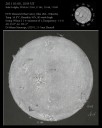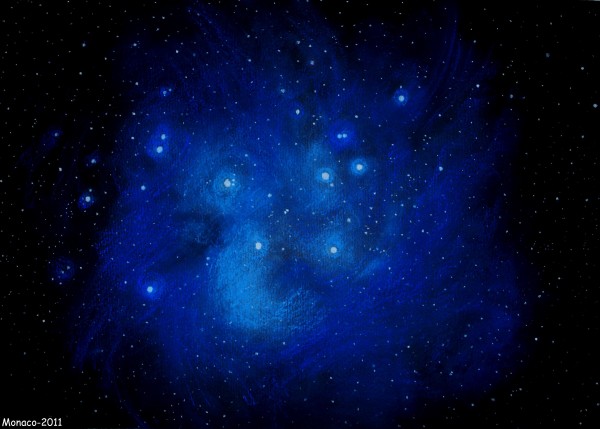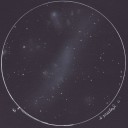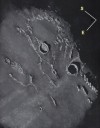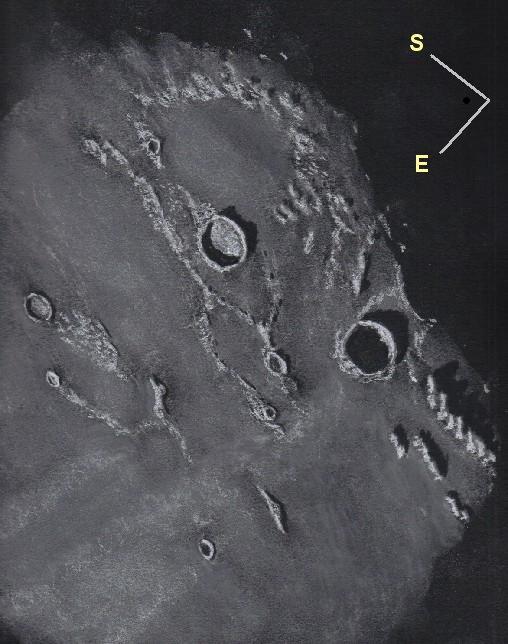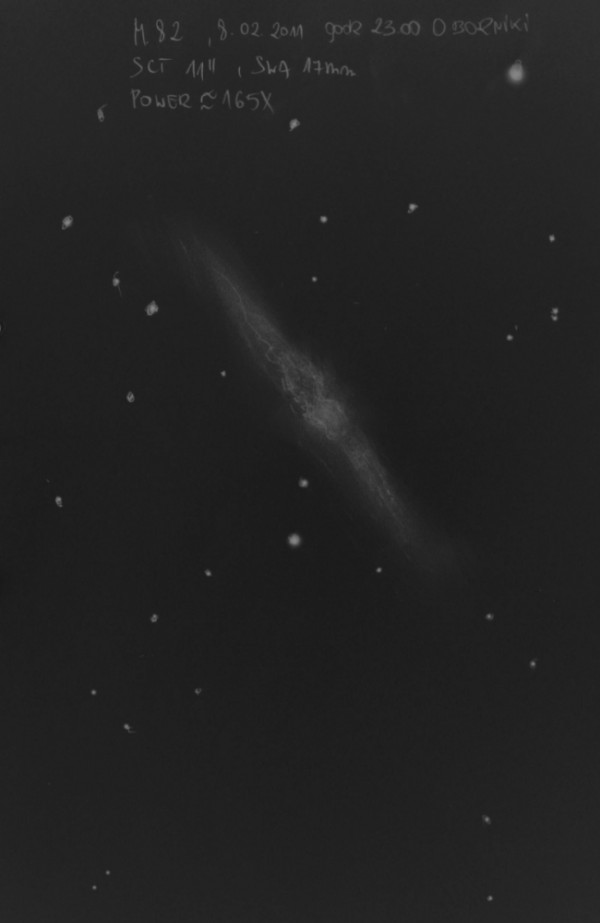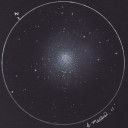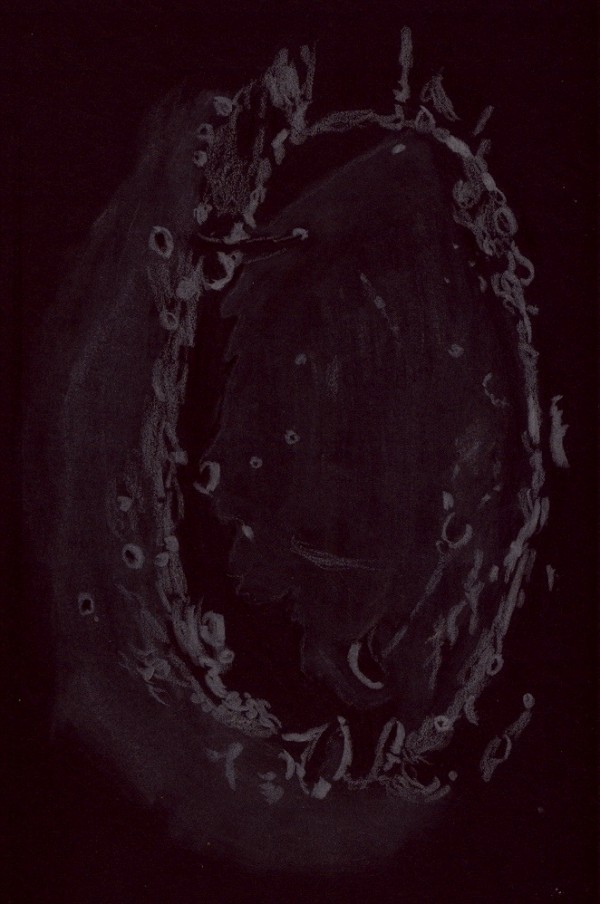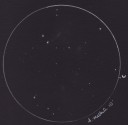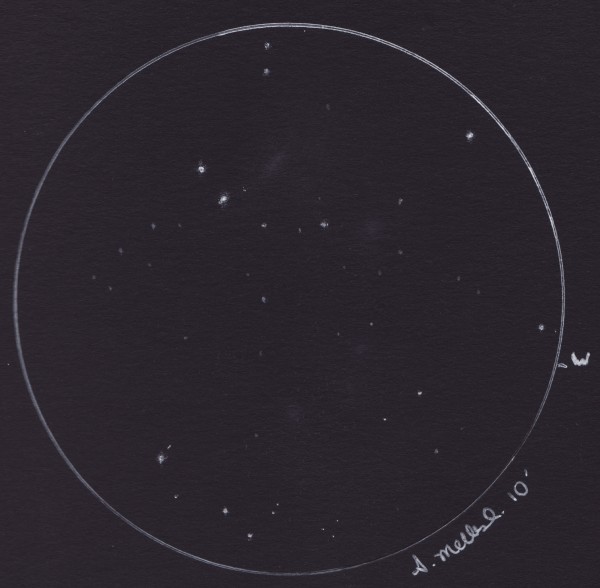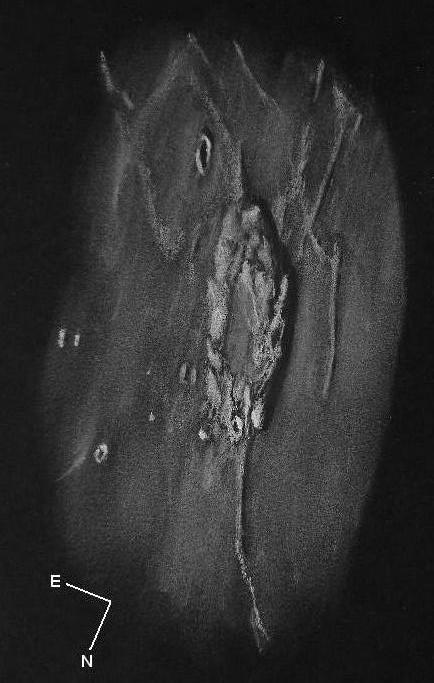
2011 03 08, 1703 UT – 1945 UT
Solar h-alpha, NOAAs 11164, 11165, 11166, 11169, prominence sequence 240 pa (11165)
PCW Memorial Observatory, Zanesville, Ohio USA – Erika Rix
www.pcwobservatory.com
Temp: 16.8°C, Humidity 34%, SE winds 8mph
Seeing: Wilson 3.5 w/moments of 1, Transparency: 1-2/6
Alt: 44.5°- 36.4°, Az: 168.1°- 221.1°
DS 60mm Maxscope, LXD75, 21-7mm Zhumell
H-alpha sketch created scopeside with black Strathmore Artagain paper, white Conte’ crayon and pencil, Derwent charcoal pencil, black oil pencil.
It was a nice surprise to see the Sun out and the thin clouds scattered enough for a solar session, especially with 4 active regions present. I didn’t pull out a white light filter. It certainly would have made a great comparison to the h-alpha views with all the sunspots scattered about. The fibrils in NOAA 11166 were outstanding and plentiful, reaching out through plage in wide arcs. 11164 looked etched near the limb with stark contrast between the filaments and plage.

It was 11165 that kept most of my attention today with its area of prominence changing so rapidly that I’m fairly certain portions of it erupted and then collapsed on itself. Two times sections had broken free and floated off. During those times, a sketch was completed every 5-10 minutes.
I would have liked to have stayed out for at least a few more hours, but the transparency became too horrendous to pull detail out of the prominences and full overcast skies was soon to follow.



